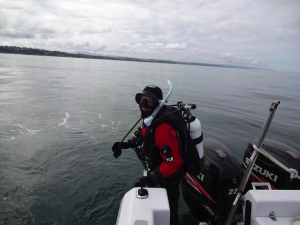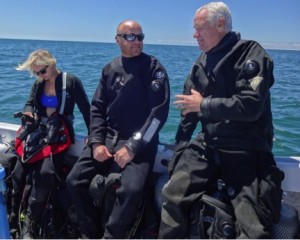- But first… let’s take a selfie! Dive group mid-meeting selfie.
- Sport Diver and Scuba Diving magazine editors, art directors and interns at the planning meeting for 2015 in July 2014.
- Sport Diver and Scuba Diving Magazine content outline ideas for 2015.
- John, our talented photographer, pulling up the images he had just taken of me in the studio to show to Sport Diver’s art director and photo editor.
- I was relieved that only my neck down would be in the shot! Me taking a moment during the shoot to smile at a (much) smaller camera.
- Roger Roy, ScubaLab’s director, fixes my mask for the shoot while surrounded by amazing new dive gear!
The beginning of my second week started with meetings. Lots and lots of meetings. The dive group—the interns and all of the editors and art directors and photo editors—made the journey through the humid Winter Park Village jungle to the frigid arctic of Bonnier’s Zone 5, where we holed up and took over their conference room. And when I say took over, I mean we took over. Patricia brought in muffins and bagels and cookies, and some kind soul from the office bought us cupcakes. (Ashley made the mistake of buying a massive tub of goldfish that we finished that day. It was actually kind of scary…)
We even made frequent coffee runs to their kitchens. (Speaking of coffee, I believe I’ve become addicted.)
It was amazing to see all those creative minds at work as we pored over the neatly organized issue plans for 2015 and pitches from contributing writers.
We were planning both Sport Diver and Scuba Diving’s entire 2015 year: gear, trips, magazine plans, briefs, articles, who would write what and go where. I found myself thinking over and over again: So this is how it works.
It wasn’t as formal as I had thought it would be, but I liked the give and take and honest collaboration. If you had an idea to share or an opinion, you put it out there and contributed, and it was considered.
I soon learned that everything in the publishing world is deliberate. From strategically placing the shark-themed cover and feature right before Shark Week to putting the island hopping emphasis in spring to allow time for summer trip planning, everything was in a certain spot for a reason.
Roger Roy, director of ScubaLab, joined us on Wednesday to plan 2015’s gear for both magazines. The tough part of having two scuba diving related magazines is planning—both magazines can’t feature the same gear relatively close to one another. Art director extraordinaire Elizabeth Fleener was also heavily involved in this conversation, as the aesthetic quality of the magazine comes into play here. I had never really given much thought to the appeal of dive gear, but as she pointed out, it’s really hard to make drysuits and wetsuits look visually appealing. Black, grey, and more black. (I would soon be able to witness this firsthand in the photo studio, but I’m getting ahead of myself!)
I was taken away to paradise—crystal clear waters, palm trees, and exotic fish—as next year’s travel plans were put on the table.
Philippines, Australia, Grand Cayman, Bahamas, Raja Ampat, Wakatobi, South Africa, California… the list went on. And I nearly swooned when the editors began almost calling “dibs” on the trips and saying where they haven’t been and what is on their “dive bucket list.”
I whispered to Tara Bradley, senior editor for Sport Diver, “You mean… you get PAID to go on these trips?” It was a newbie question, sure. But I couldn’t believe it. I dreamed of going on these exotic trips, and they were able to go AND get professional photography AND write about it. All as a part of their job.
Now that is the life.
Last, but not least (I promise I’m wrapping it up), was Thursday’s photoshoot. Sounds so glamorous.
Although it wasn’t quite glamorous in the way I imagine a fashion shoot would be, I had a lot of fun working with Chelsea, Elizabeth, John, and Roger down in the photo studio. I’m a diver, so wearing scuba gear is natural, but the photographer in me loved being able to see the design and artistic aspect. Only my torso is going to be famous, but hey, better than nothing!
I felt like a kid in a candy shop, surrounded by tons of brand new scuba gear. The scuba geek in me came out and I talked to Roger about all the new dive computers for at least 15 minutes before I realized I should actually put the gear on to get started.
All in all, an amazing week. Who knew it could get better?

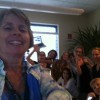

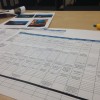
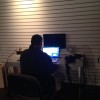
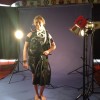
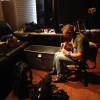


































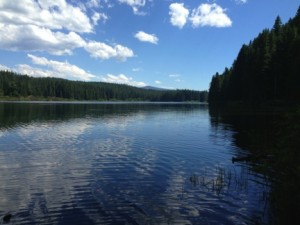


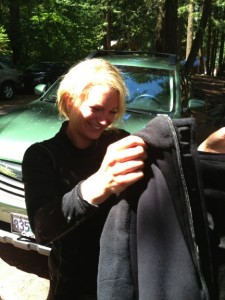 We entered the water on the western bank, and made our way towards the center of the lake where the depth increases to about 45ft. As soon as we hit deeper waters I immediately wished I had an underwater camera; the crystal clear water reminded me of the tropics, minus the warm water and bustling coral reefs.
We entered the water on the western bank, and made our way towards the center of the lake where the depth increases to about 45ft. As soon as we hit deeper waters I immediately wished I had an underwater camera; the crystal clear water reminded me of the tropics, minus the warm water and bustling coral reefs.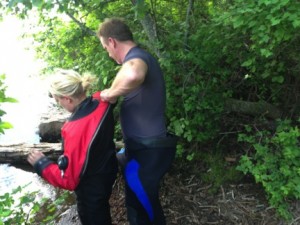


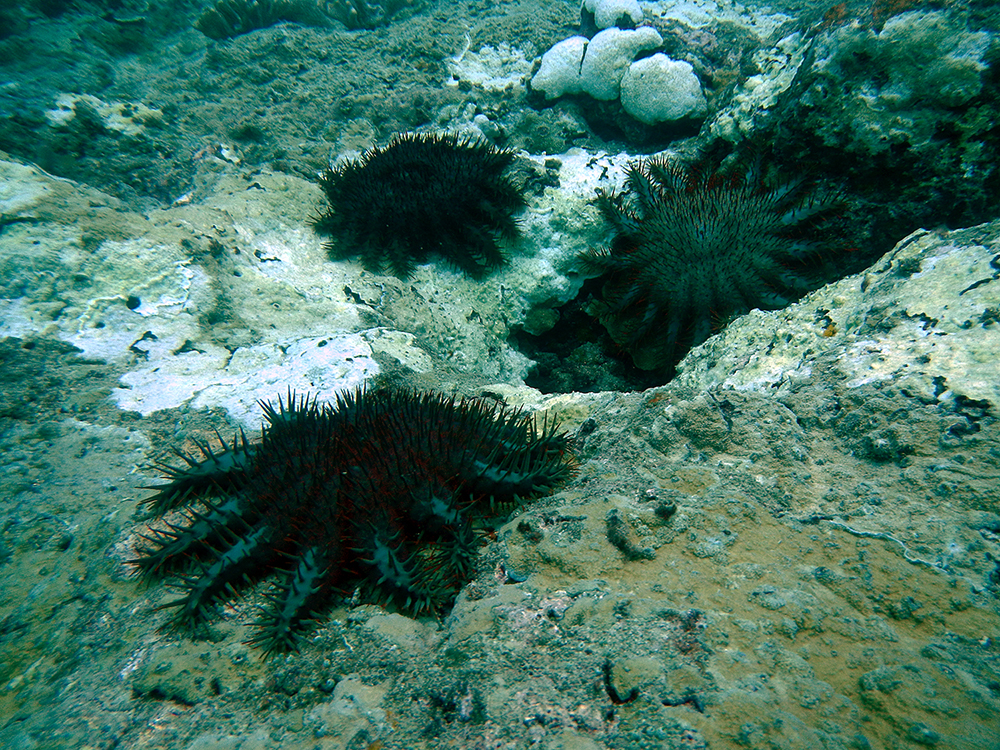
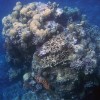
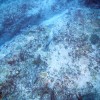
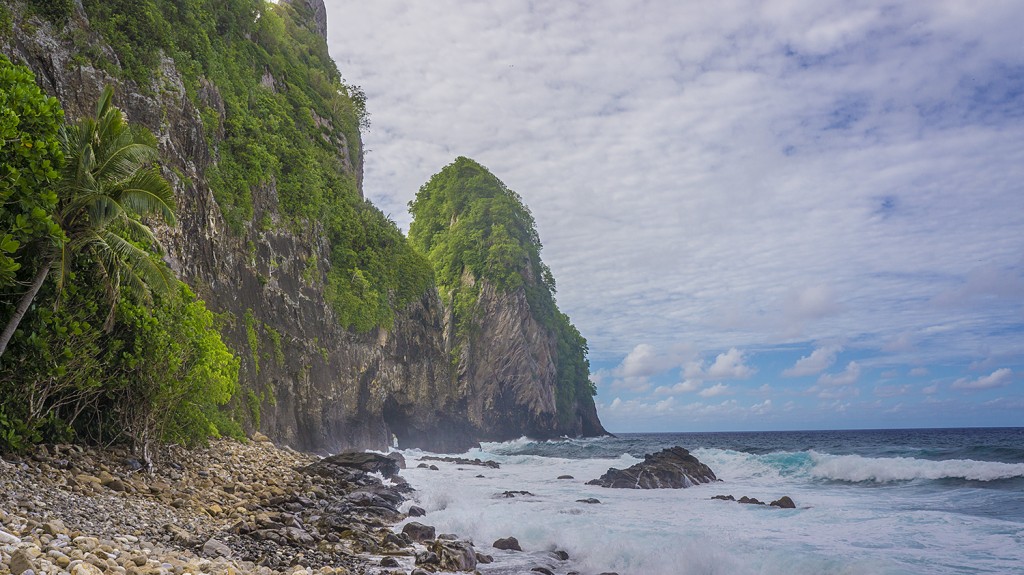
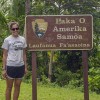
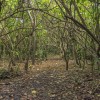

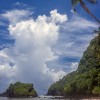


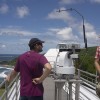

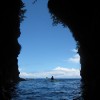
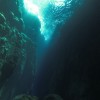
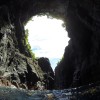

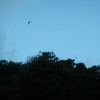

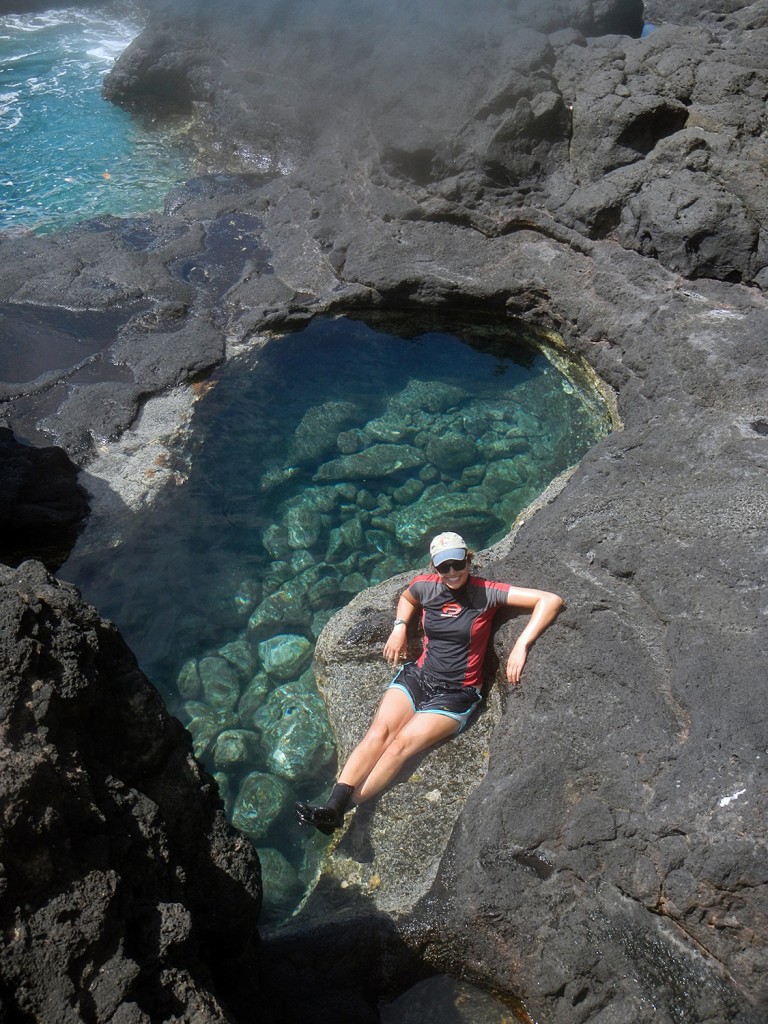
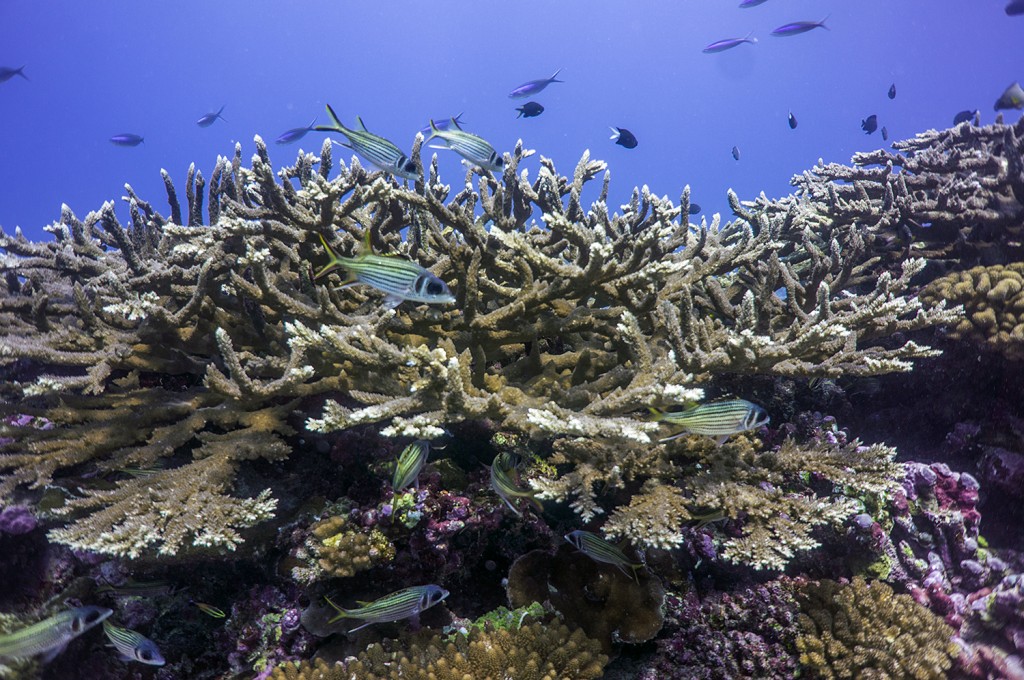
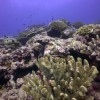
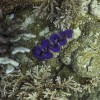
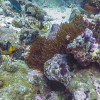
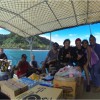
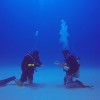

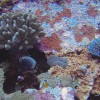

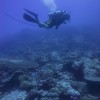
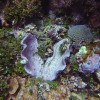

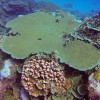
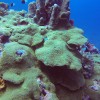
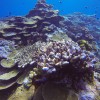
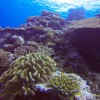
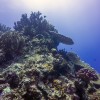
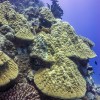

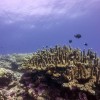
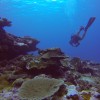
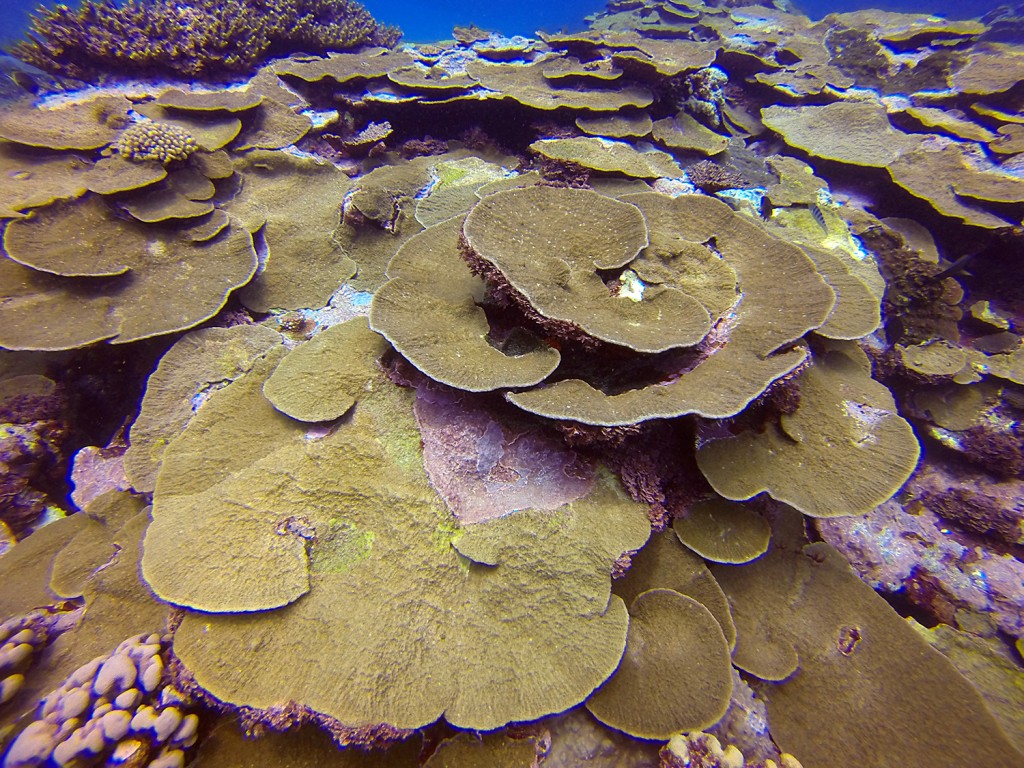
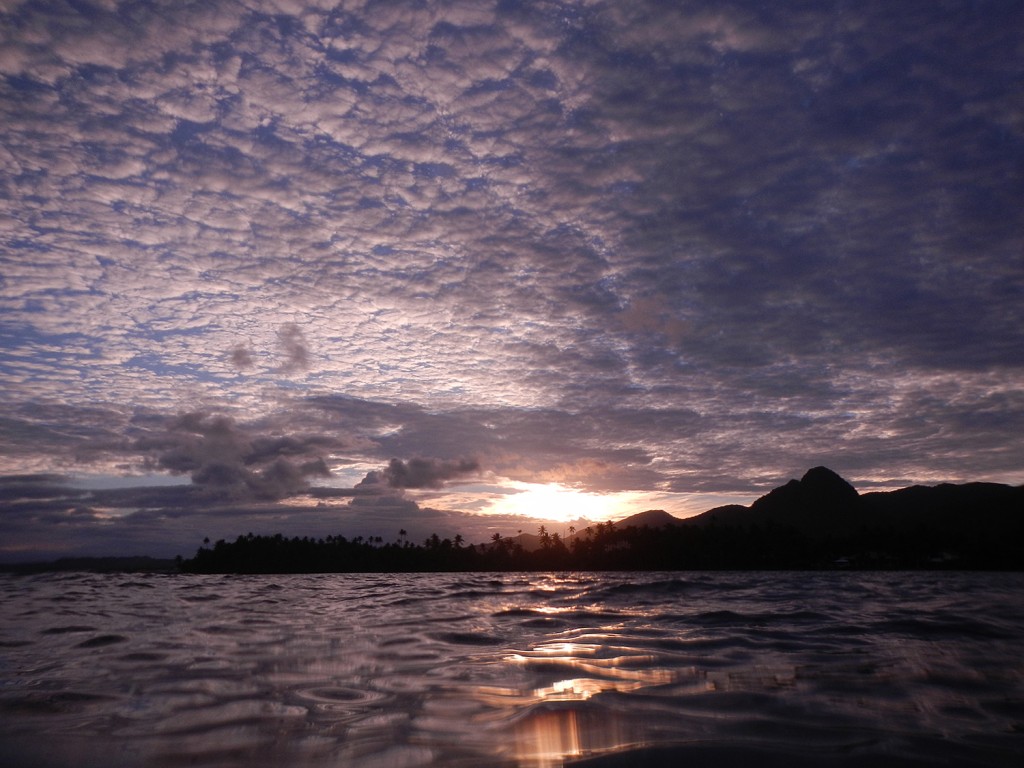

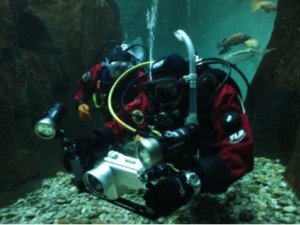
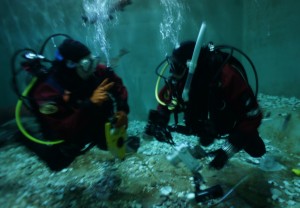
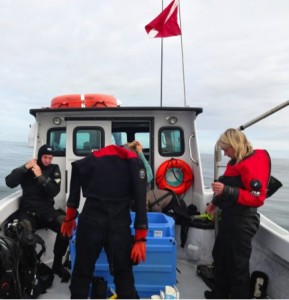 A few days later it was time to try out our new skills in open water. Jim, Vallorie, myself and four other AAUS Scientific Divers set out on Gracie Lynn for North Reef, which was selected as one of the survey sites for the rockfish project. The first buddy team went down to place the block that we would start the survey from. Once they had it in place, they signaled their location by deploying a surface marker buoy, which cued Vallorie and I to get inthe water. We descended along the anchor line and pointed our compasses towards the heading we had taken on the surface. The visibility was only about 5 ft. but within a few minutes we were able to locate the other buddy pair waiting by the block. I clipped the transect tape to the block and we swam south along the wall to conduct the survey. Visibility was poor and the current made it a challenge to remain in proper positioning with Vallorie, but we made it to 50 meters, at which point I signaled to Vallorie that it was time to turn around. On the way back towards the block, the camera housing started beeping, signaling that a leak was detected. We quickly got back to the marker buoy and ascended to care for the camera. Once on board we washed the housing with fresh water and carefully took it apart. This should be the first step any time you suspect a leak in your underwater camera housing. We then placed the camera in a zip lock bag with desiccant pellets in hopes that it would dry out before any damage was done. We were unable to use the camera the rest of the day, but luckily this was just a training day and it was not critical that we collect data. We spent the rest of the dives working on skills such as navigation, setting up transects, and deploying surface marker buoys, and also had the chance to collect invertebrates for the aquarium. Although some may consider the low visibility, high surge water to be less than ideal diving conditions, I feel that the difficult working conditions enhance training dives. If you can successfully handle equipment and manage task loading in these conditions, you will be much better prepared for future dives no matter where they are!
A few days later it was time to try out our new skills in open water. Jim, Vallorie, myself and four other AAUS Scientific Divers set out on Gracie Lynn for North Reef, which was selected as one of the survey sites for the rockfish project. The first buddy team went down to place the block that we would start the survey from. Once they had it in place, they signaled their location by deploying a surface marker buoy, which cued Vallorie and I to get inthe water. We descended along the anchor line and pointed our compasses towards the heading we had taken on the surface. The visibility was only about 5 ft. but within a few minutes we were able to locate the other buddy pair waiting by the block. I clipped the transect tape to the block and we swam south along the wall to conduct the survey. Visibility was poor and the current made it a challenge to remain in proper positioning with Vallorie, but we made it to 50 meters, at which point I signaled to Vallorie that it was time to turn around. On the way back towards the block, the camera housing started beeping, signaling that a leak was detected. We quickly got back to the marker buoy and ascended to care for the camera. Once on board we washed the housing with fresh water and carefully took it apart. This should be the first step any time you suspect a leak in your underwater camera housing. We then placed the camera in a zip lock bag with desiccant pellets in hopes that it would dry out before any damage was done. We were unable to use the camera the rest of the day, but luckily this was just a training day and it was not critical that we collect data. We spent the rest of the dives working on skills such as navigation, setting up transects, and deploying surface marker buoys, and also had the chance to collect invertebrates for the aquarium. Although some may consider the low visibility, high surge water to be less than ideal diving conditions, I feel that the difficult working conditions enhance training dives. If you can successfully handle equipment and manage task loading in these conditions, you will be much better prepared for future dives no matter where they are!